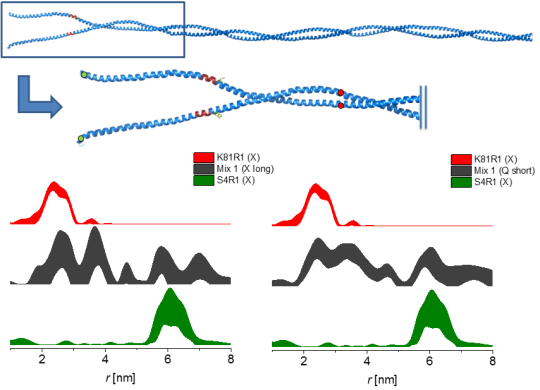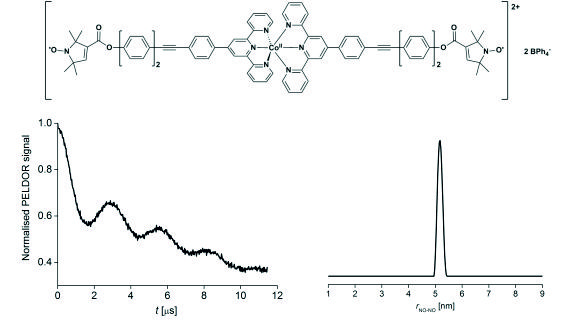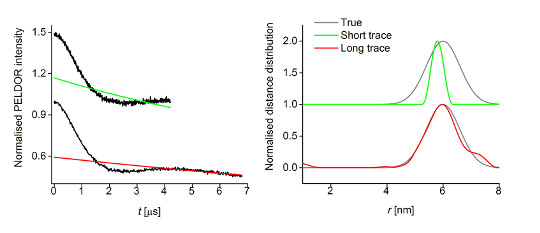
The Bode EPR lab
Research projects
Research in the Bode EPR lab is centred on EPR method development and applications. The latter range from biological systems and biomimetic model compounds to inorganic chemistry and catalysis.
The research is truly inter-disciplinary, embracing inorganic and organic synthesis of model systems, preparation of biological samples, experimental continuous wave (cw) and pulse EPR, numerical simulations, DFT calculations, etc.
A set of representative research projects in the Bode EPR lab is detailed below.
Information published on the university research information system can be found here.
1) Pulsed electron-electron double resonance (PELDOR)
Many (but not all) of our projects involve EPR distance measurements using the PELDOR/DEER method.

Many projects in the Bode lab are shared with in-house collaborators, such as structural biologists in the BSRC, or synthesis groups in Chemistry. Often, EPR spectroscopy is used to tackle questions where none of the more 'standard' physicochemical techniques is feasible. We embrace and strongly support this diversity.
Published examples of our work include research on the single-stranded DNA binding protein (SSB) of Sulfolobus solfataricus, a collaboration with Prof. M.F. White and Dr. J.C. Penedo. Using EPR distance measurements we could support the hypothesis that the protein does not form a significant amount of dimers (or even higher oligomers) without the presence of DNA.
In another study we looked at at the dimerisation interface of influenza A NS1 protein using EPR and molecular modelling.


b) Methodology
We are engaged in methodology development using small-molecule chemical model systems (yardsticks; biomimetic systems) and numerical simulations.
Some of our methodology-related projects are described below.



2) Catalysis
Another aspect of research in the Bode lab is centred on the use of EPR for catalysis. Here, the full range of EPR methodology from continuous wave EPR to a variety of pulse experiments is employed.














